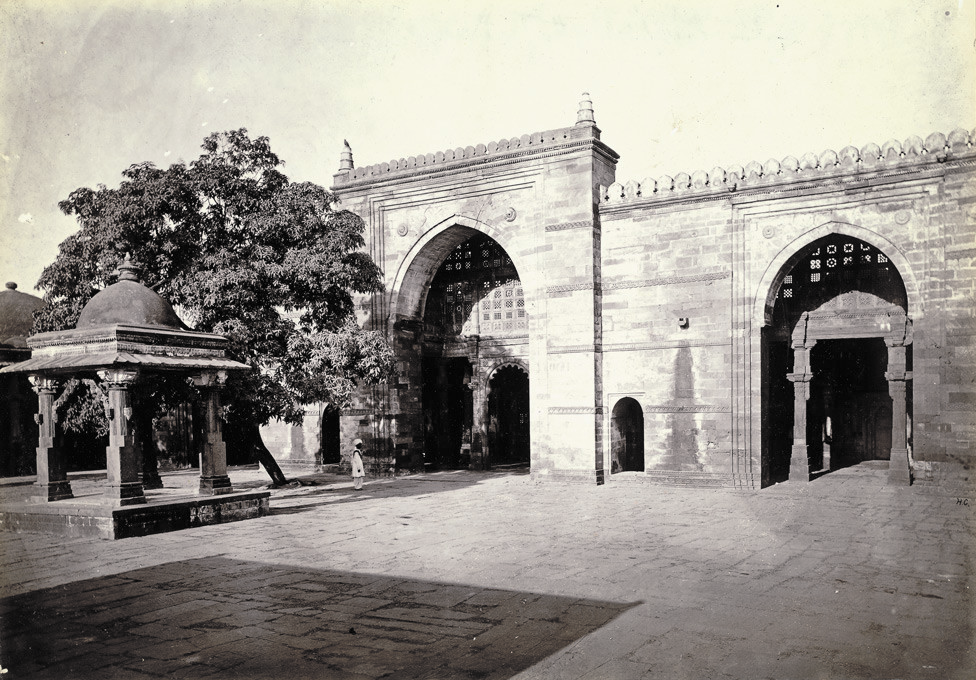Masjids of Gujarat
 Author: Author
Author: Author
Article Date: 13.12.2012
Owing to the assiduous patronage and building ambitions of Muslim dynasty which ruled over India for centuries including Gujarat, a port of old Bombay presidency, Indo Islamic architecture flourished for a period of some two hundred and fifty years from a time early in the fourteenth century. The mosques built in the earlier half of the fourteenth century have a certain charm and considerable dignity. The best example of this phase is the Jami Masjid of Cambay (1325 A.D.)
 Sine artisans who built the Jama Masjid were not only locals but artisans reacruited from Delhi, the mosque displays the style of Khaljis , specially of Jamat Khana at Nijamuddin, Delhi. The pillars within the central archway have been enriched by an engrailed arch of some temple extraction. The fine proportions and dignified appearance of Cambay's Jami Masjid, its simple intelligible design provide the master key to the mosque architecture of Gujarat.
Sine artisans who built the Jama Masjid were not only locals but artisans reacruited from Delhi, the mosque displays the style of Khaljis , specially of Jamat Khana at Nijamuddin, Delhi. The pillars within the central archway have been enriched by an engrailed arch of some temple extraction. The fine proportions and dignified appearance of Cambay's Jami Masjid, its simple intelligible design provide the master key to the mosque architecture of Gujarat.
The arch screen in front of the pillared sanctuary at the Jami Masjid at cambay is clear evidence of the inspiration derived from the Quwwat-ul-Islam Mosques at Qutb-Minar and Jamat Khana Masjid in Delhi.
Jami Masjid of Patan (1300AD) is among the earliest few structures of the Muslim rule in Gujarat. It was an ancient temple suitably altered to function as a tomb of the saint (Sheikh Farid). The Jami Masjid at Patan is a new orderly rearrangement of nearly one thousand temple pillars.
The Jami Masjid of Broach is an open pillared mosque. The pillars are richly carved and retain their original brackets which once supported the mandapa ceilings. Cusped and geometrical patterns on square, sunk coffered ceilings and the pillars retain their original character. The walls of the mosque evidence some deliberate planning, particularly the mihrabs and the arched windows on the western side. The inclusion of the pointed arch has been fastidiously adhered to in compliance with the new order.
The mosque of Hillal Khan in Dholka (1325 A.D.) , is noteworthy for the use of tall, ornamental turrets on both sides of the central archway, and also for one pillared canopy at each corner. The new architectural elements are far from being perfect.
The Tanka Masjid at Dholka (1361A.D.) is an open pillared mosque making good use of richly carved pillars. It is a purely functional structure. The Mosques of Patan, Baroach Cambay and Dholka provide the earliest examples of Islamic architecture in Gujarat.